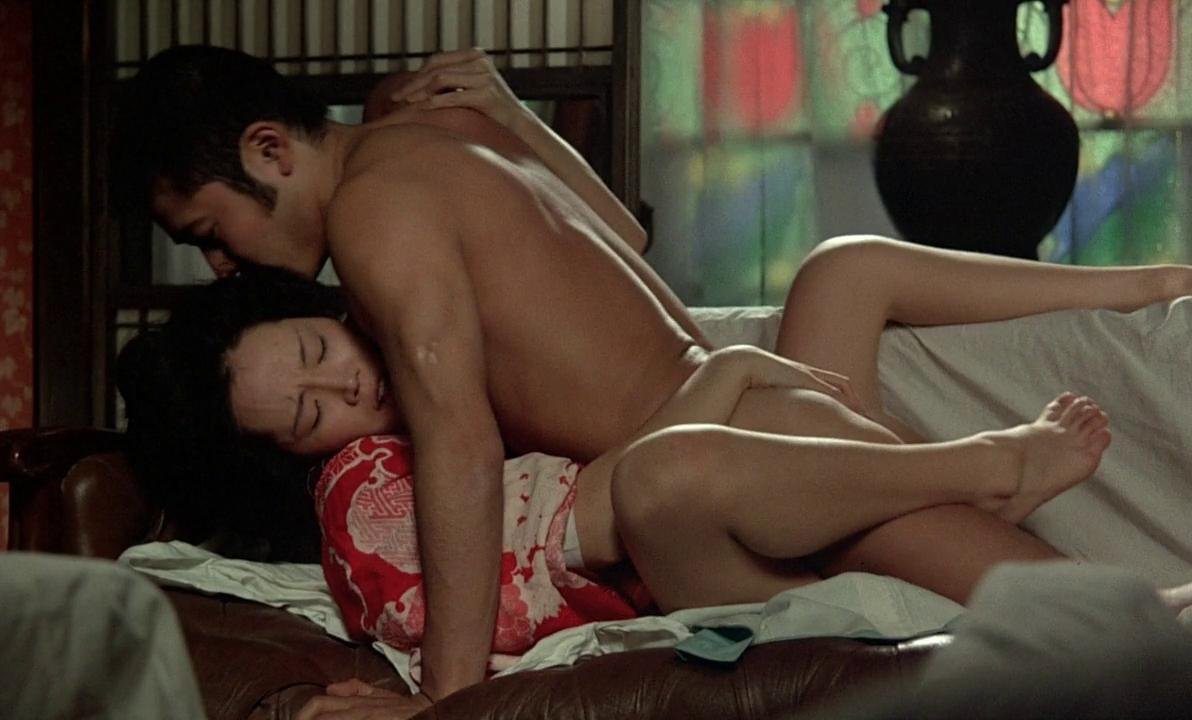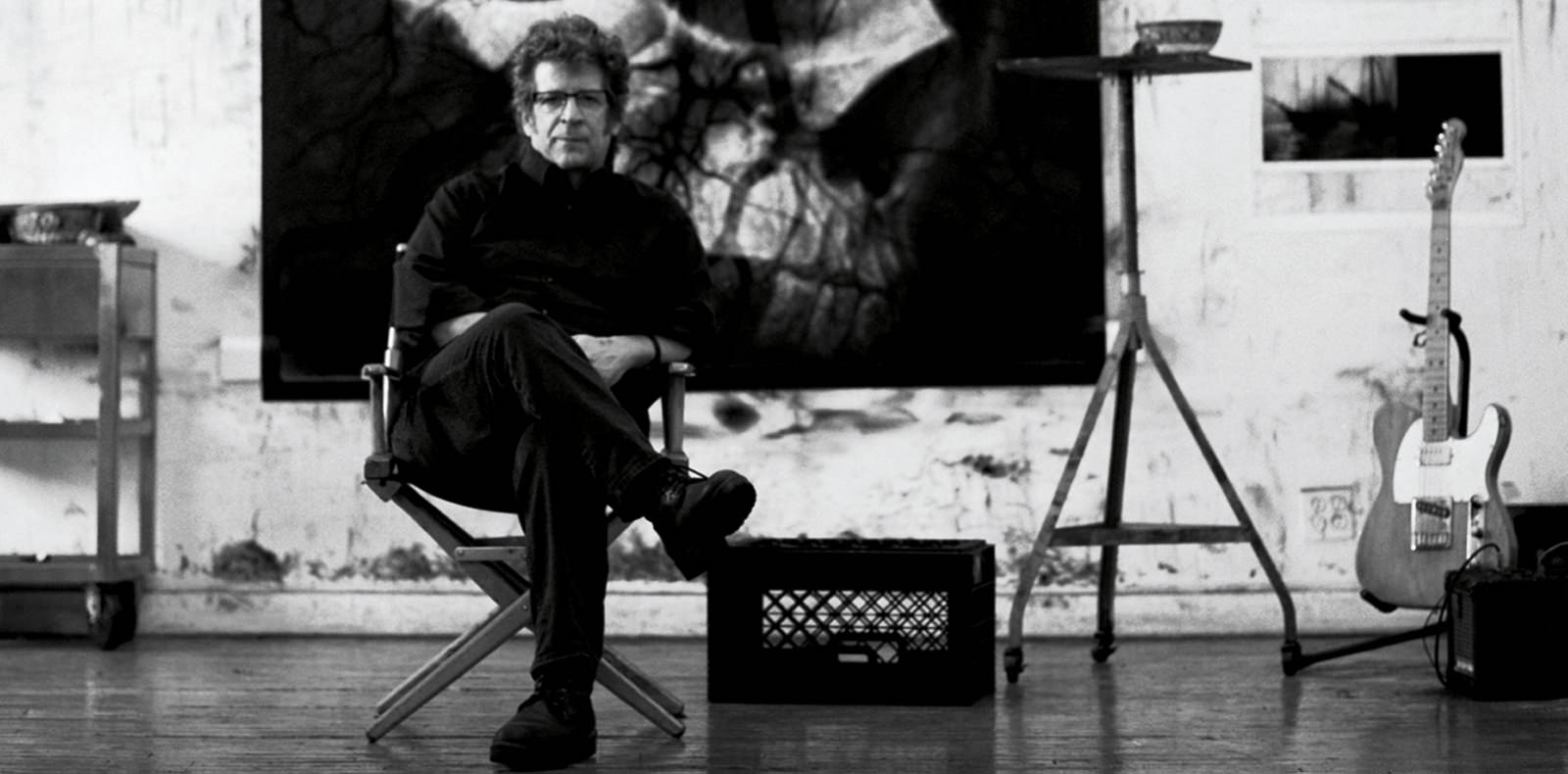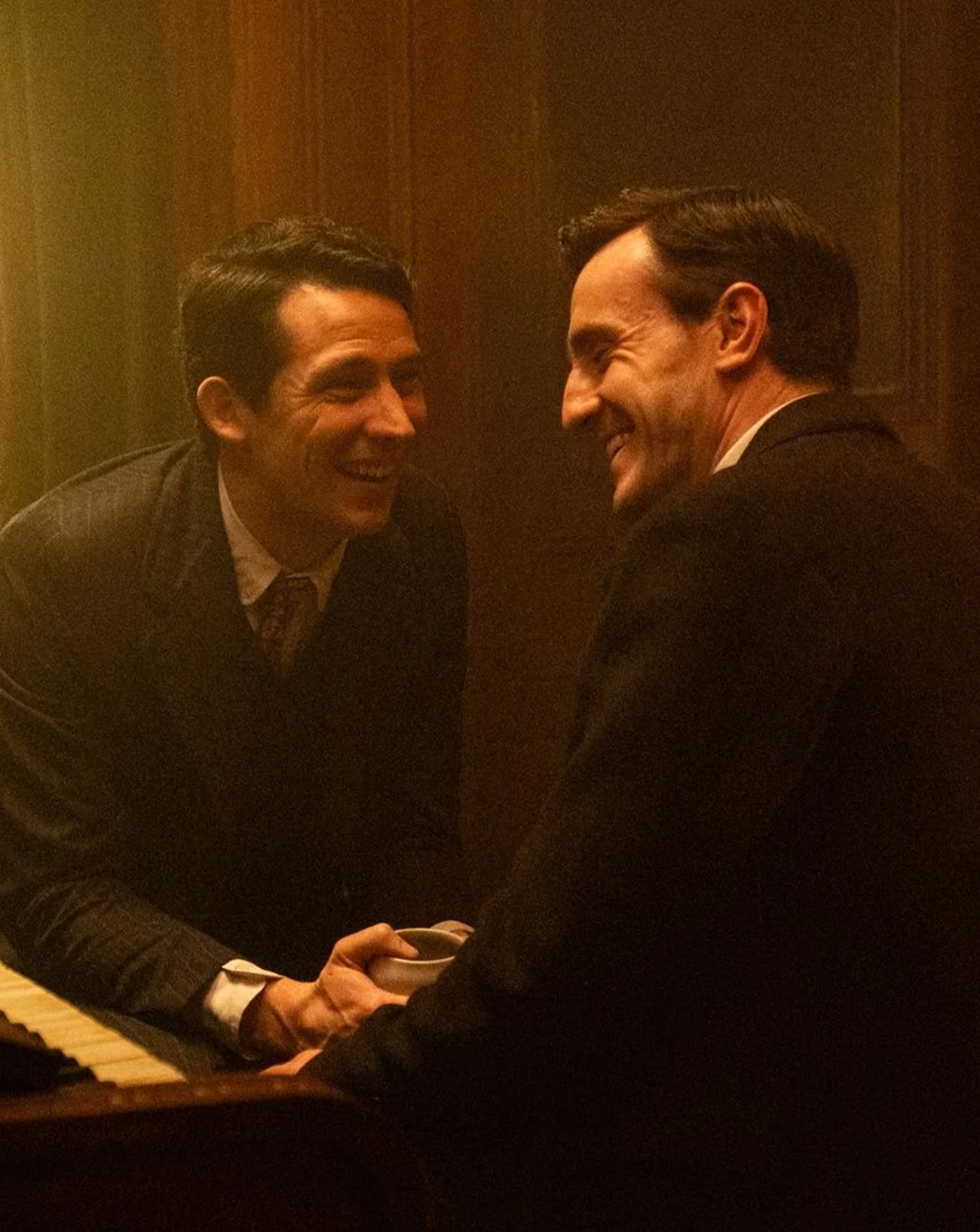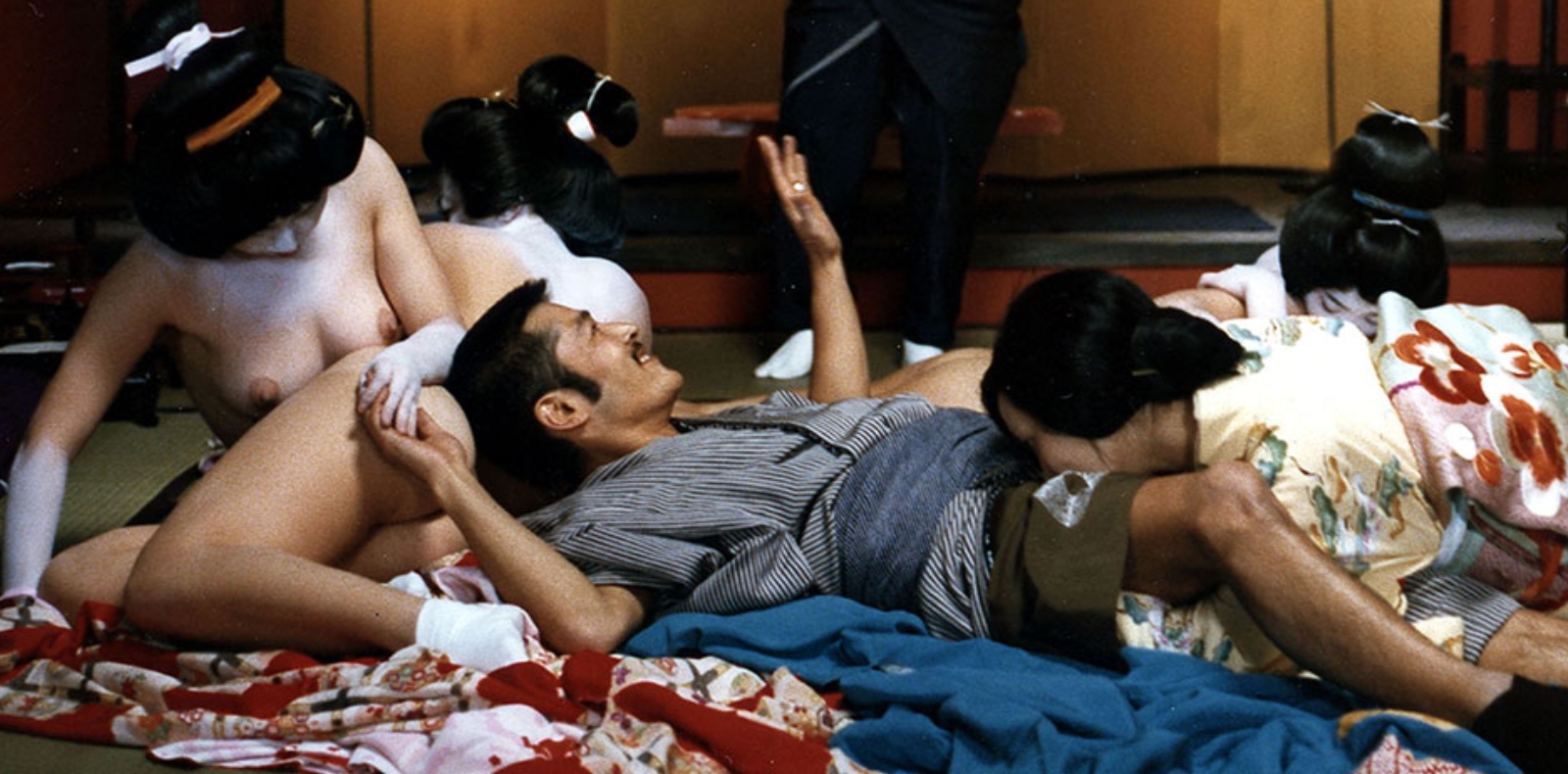
26
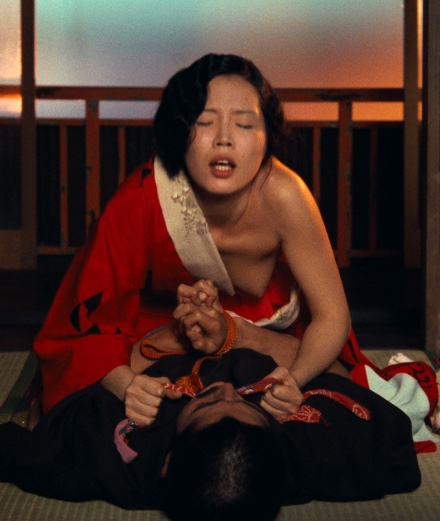
26
“In the Realm of the Senses” : the secrets of the most erotic film
The graphic tale of a doomed, obsessive love affair, Nagisa Oshima’s controversial In the Realm of the Senses has been termed the most erotic film of all time.
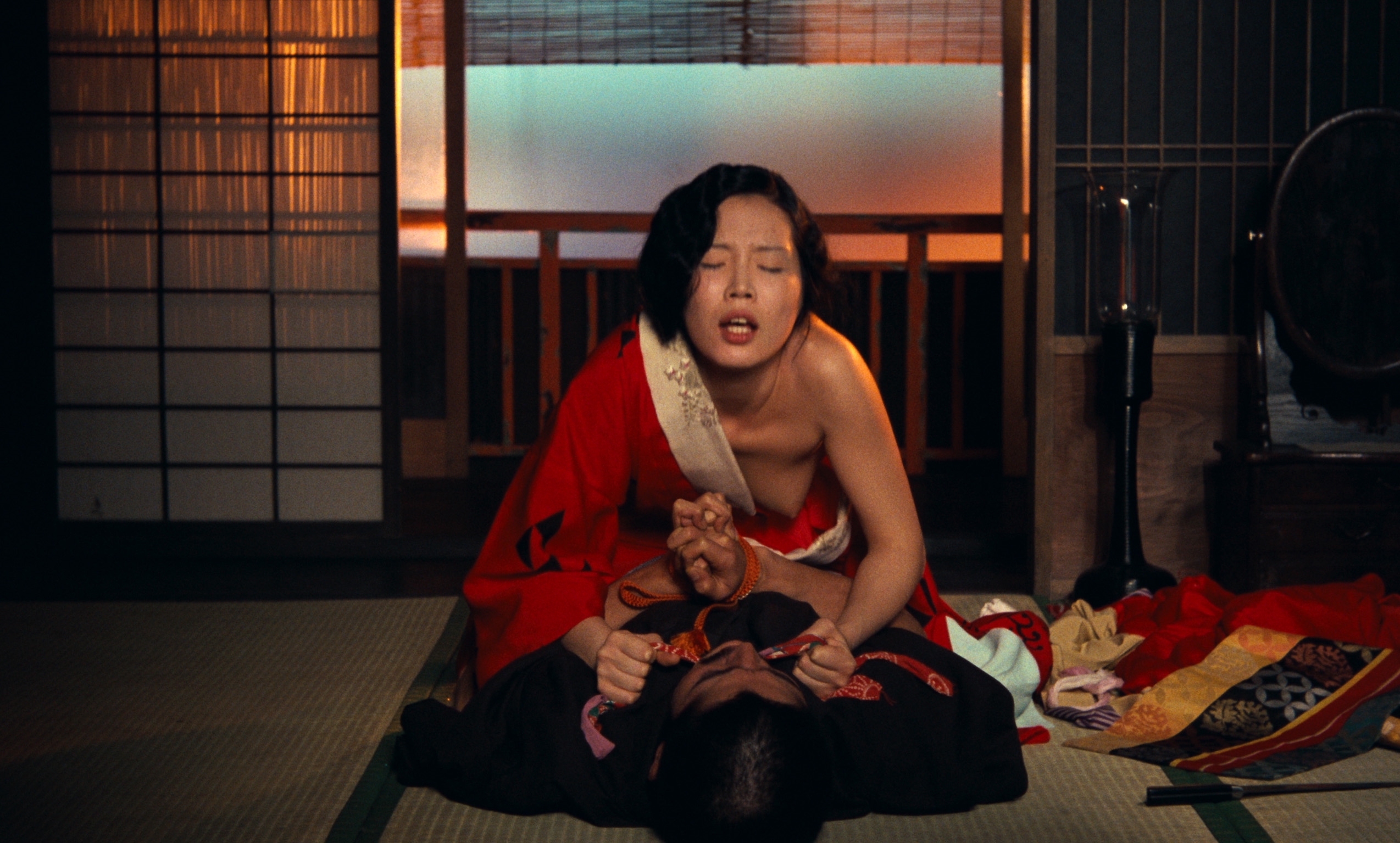
In general, even people who haven’t seen the film know how it ends: Sada slices off Kichi’s penis. A bloody member that a certain Abe Sada was found carrying through the streets of Tokyo one day in 1936 before being arrested by the police. An incredible, enigmatic gesture that inspired several films, including Nagisa Oshima’s 1976 opus which provoked one of the biggest scandals in cinema history. How do we get to this decapitated phallus? In general, even those who have seen In the Realm of the Senses are unable to tell you. The film resembles one of those dreams that leaves only a confused trace. It begins gently before taking hold of you and locking you into the maddening spiral of physical love. Sense, sensuality: a title that keeps its promises. The Japanese title is not devoid of interest either: the bullfight of love. For the relationship between Sada and Kichi is also a matter of love, an intense, voracious love that makes them forget about the rest of the world. Their desire is imperious. The lovers venture outside but also make love there, turning the world into a gigantic bedroom. Make love not war: in a repressive, politicised Japan, Sada and Kichi’s choice causes them to be marginalized, although they do not seem to notice. Their sexuality is so frenetic as to feed off others: geishas, servants, inn keepers are all swept into their carnal vortex. To continue the bullfighting metaphor, this is a fight to the death in the arena before the final blow. In the Realm of the Senses follows this sensual and fatal battle between two bodies, a crescendo of bouts leading to an ultimate face-off. A dream scene shows Sada naked on empty bleachers, Kichi and a small girl circling her whilst repeating the same song: “Ready? Not yet.” Ready for what, if not death?
Sada leads the dance. Her pleasure is also an expression of suffering, as she is submerged by the realm of the senses. If the film was directed by a man, Oshima, its heroine is a woman. At first, Sada is passive, submissive (Kichi first feels desire for her as he watches her scrub the floor of the inn), but she rapidly takes hold of the reigns and orders Kichi’s manhood to be the ever-rising sun. “Pissing is the only rest that it gets,” remarks Kichi, while Sada, whose organ sucks in and spices the food destined to him, warns him that she will turn him into a “skeleton”. From then on, the film becomes the story of a battle against exhaust-ion. Ridden, strangled, threatened by Sada, Kichi fades and weakens. Death is not far away. Sada forces him to make love to an elderly geisha who reminds him of his mother’s dead body.
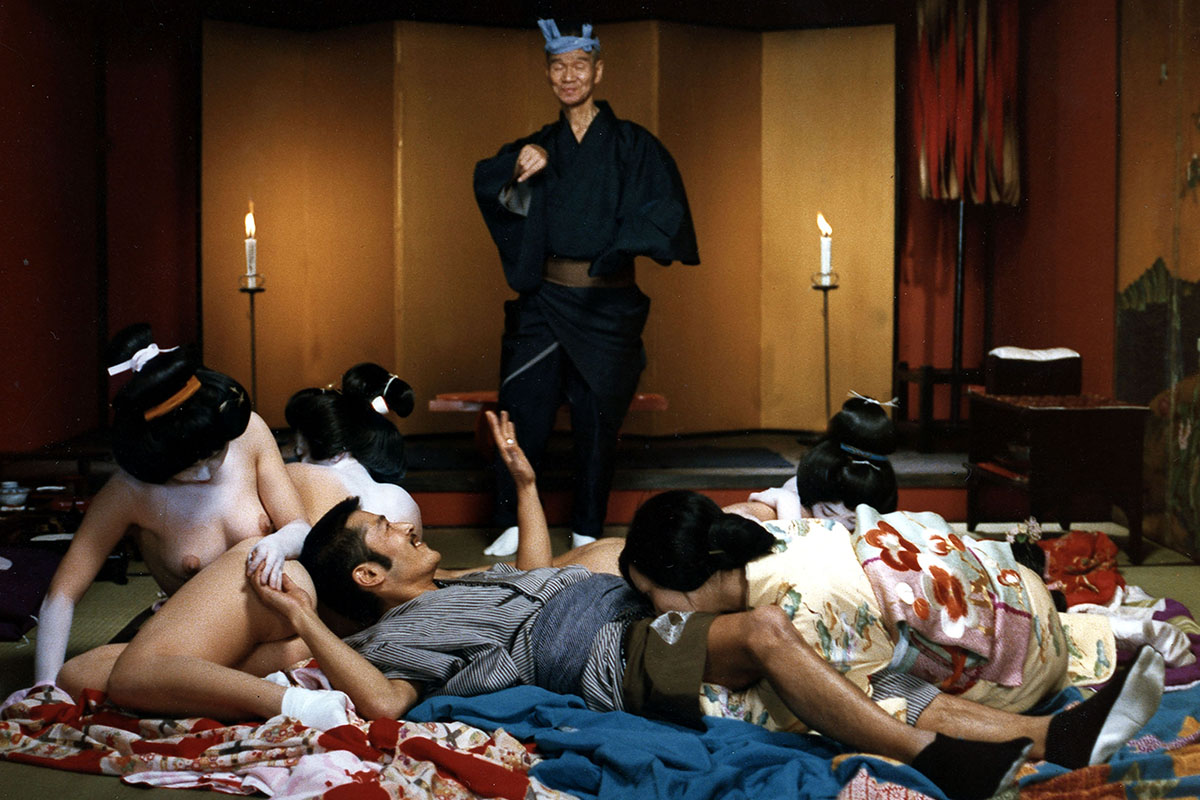
“I first loved the nape of your neck. I would have wanted you to enter into me,” says Sada. Kichi decides to put his head inside Sada: “It is so good, so soft”. The end of the film gives off a sense of bewilderment, as if Oshima had also been sapped of energy. But the true interest stems from the crescendo, an explosion of the senses unique in the history of cinema. The genuine acceleration occurs when the two lovers return to Kichi’s house. They have just celebrated their honeymoon night in another inn. In front of her boss, Sada says that she must go away for 24 hours. To earn her living, she is forced to prostitute herself to an old professor. His jealousy piqued by imagining her with someone else, Kichi takes her violently. The mistress of the inn moves away slowly. The two lovers then swap kimonos. Once she is on the train, Sada runs to the toilet to smell Kichi’s kimono while she imagines him running next to the tracks, naked in a women’s kimono. But Kichi has stayed at home, so frustrated that he ends up taking the mistress of the inn as violently as he had Sada. In turn, suffering alongside the professor, Sada asks him to beat her. She then sits astride him, imagining that he is Kichi. When separated, the lovers make others take the place of the missing Other. When Sada describes the scene to Kichi, he asks her to beat him. Kichi becomes Sada in an exchange that suggests the fusion of two inseparable bodies and foreshadows the gesture of a woman who cuts off her lover’s penis to better possess it forever.
If it appears a far cry from the dull workings of porn movies and their blank lovemaking, In the Realm of the Senses is also literally a porn film. “Let’s make a film together. It will be a porn film. You have control over content. I provide the money, that’s it.” Such was the proposal made to Nagisa Oshima by Anatole Dauman, producer of such films as Night and Fog or Hiroshima Mon Amour. A samurai of independent production, in other words, clearly determined to cause a stir in the wave of porn films submerging France in 1972 while also provoking those institutions “in charge of supervising our morals.” Dauman’s proposal did not come out of the blue – he had been distributing Oshima’s films in France since 1968 and saw him as a master of revolt against the limits imposed by Japanese culture. Oshima began to write the script in 1972, inspired by the popular real-life story of Abe Sada. But for the next three years, the project remained dormant, Oshida shooting only for television. The 1970s were a notably poor period for Japanese cinema, but Oshida decided in 1975 to “show sexual organs and sexual acts. To break all taboos. That is what porn films meant to me.” This new form of cinema frightened the Japanese. Oshida enlisted the help of Wakamatsu Koji, producer and director of the “pink films” that had enjoyed huge success in Japan at the tail end of the 60s. Few people were motivated to participate in an adventure that Wakamatsu presented as “decisive”, but which had to remain secret for the time being. The casting of the film was the biggest hurdle, particularly for the male actors who were forced to display their erect penis to see whether or not it was photogenic. Few actors rose to the challenge. One, after having cast an eye on the porn magazines hastily purchased by an assistant, asked Oshima to assist him manually. The shoot itself took place in an unusual atmosphere which the director remembers as “extremely solemn”. The first assistant adds: “We would turn off all the lights. The camera would roll and we’d hold our breath. All you could hear was the breathing of the two actors who were still at the foreplay stage. Sometimes it would last twenty minutes.” Nothing like the set of an X-rated movie with its forced screams and moans. Occasionally, the solemn mood would lapse into unwitting comedy. One scene involved an egg which Kichi had to introduce into Sada’s vagina. The egg was never cooked firmly enough, sending Oshima into a fit of rage which the first assistant remembers to this day.
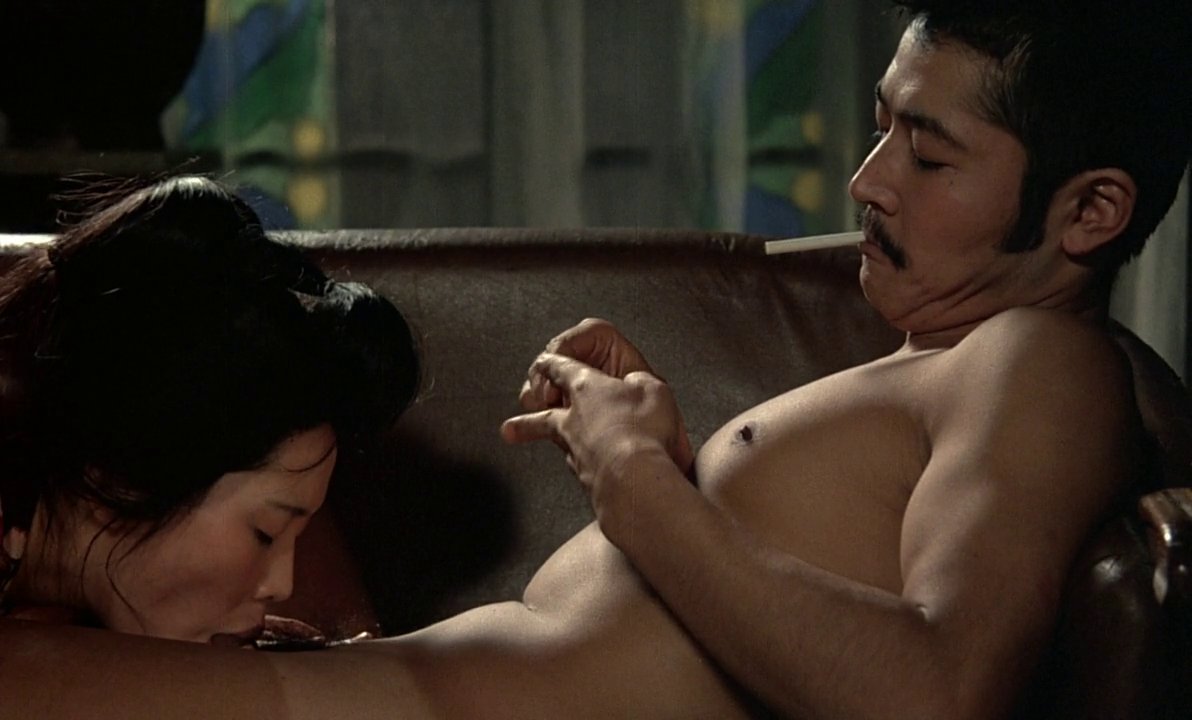
Another particularity: In the Realm of the Senses was made blind. The set itself was protected, classed as French territory since the money came from France, but there was no question of Oshima having the film developed in a Japanese laboratory where the police could seize it. Every three days, the reels were sent to France and the director was only to see the finished images at the end of the shoot. To make matters more difficult, Oshima never did more than one take, forsaking the possibility of a second choice in case something went wrong.
First shown at the Cannes Festival of 1976, the film caused a scandal of epic proportions. Critics did however applaud its new approach to pornography – which certainly was not the attitude of the Japanese police. As soon as Oshima passed through customs upon his return, the reels were confiscated. Censors subjected the film to the mutilation of trimming: only the upper section of the screen was left visible. Throughout the rest of the world, the film was shown in its original version. In Paris, it showed for 17 months, with an estimated 80,000 Japanese tourists passing through cinemas. In Japan, Oshima was accused of pornography, not for the film itself but for a screenplay published with photographs from the set. The courts accused him of obscenity and of attempting “sexual stimulation”. Oshima replied with a theoretical bent: “Obscenity resides in what is hidden,” before attempting humour: “I did not get the impression that my team were stimulated by the screenplay and my intention was not to stimulate the judges either.” After six years of court wrangles, Oshima won his case. But even today, the Japanese version of the film features blurred boxes. Oshima was not to work in his home country again until 1999. In 1985, a panel of a hundred cinema specialists voted In the Realm of the Senses as “the most erotic film in the history of cinema”. Erotic, certainly, but also painfully carnal.
